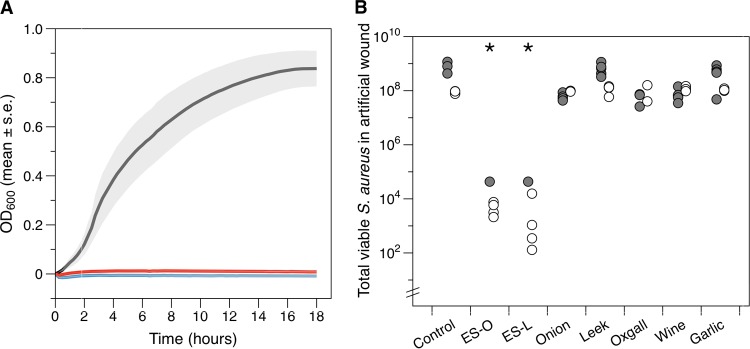FIG 2 .

Bald’s eyesalve kills S. aureus in planktonic culture and in a synthetic wound biofilm model. (A) One hundred microliters of sterile distilled water (black line), the onion variant of the eyesalve (ES-O, red line), or the leek variant of the eyesalve (ES-L, blue line) (both from batch A) was added to a 200-µl mid-log-phase culture (104 to 105 cells) of S. aureus in synthetic wound fluid (SWF), and the optical density of the culture was measured during 18 h of incubation at 37°C. The mean results from four replica populations and the associated standard errors (shaded intervals; too small to see for ES-O and ES-L) are shown. (B) Two hundred microliters of ES-O or ES-L (batch A, filled circles, and batch B, open circles) or of each individual ingredient preparation was added to five 1-day-old cultures of S. aureus growing at 37°C in a synthetic wound (400-µl synthetic wound fluid rendered semisolid by adding 2 mg·ml−1 collagen). After 24 h of further incubation, the collagen was dissolved to recover cells for agar plate counts. The control treatment was sterile distilled water left to stand for 9 days in the presence of brass, which was also present in all other preparations, to simulate the presence of a copper alloy vessel (see Materials and Methods). Asterisks denote treatments whose results were significantly different from those of the control.
